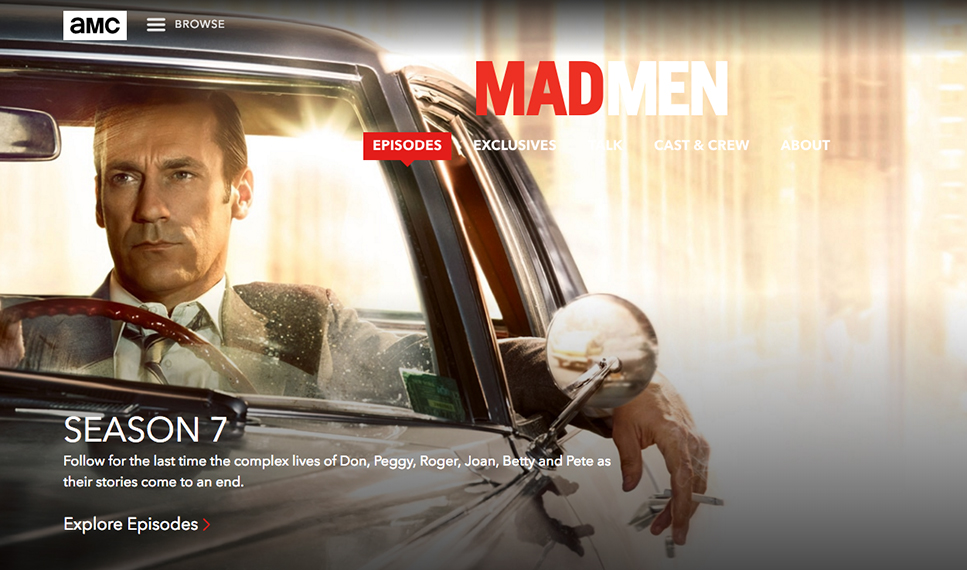Ten years on from the first airing of the hit TV series Mad Men, about a ‘golden age’ of advertising – a world of sexism, racism, hard drinking and even harder smoking – Dale Lovell looks at how the ad world changed after Mad Men and why the modern era of technology, appropriate data targeting and creative must coexist in order to maximise today’s advertising campaigns.

Despite its popularity and focus on advertising, the Mad Men show was hardly a powerhouse ad vehicle itself, contributing only a small part to AMC Networks’ revenue.
Recently, I’ve been thinking a lot about the old days of advertising, compared with how far the industry has come and how we run things today. Back in the Mad Men era – the so-called ‘vintage days’ of marketing and advertising – we didn’t have tools like artificial intelligence (AI) and machine learning to power our actions or plans. Rather, we relied mostly on hunches to create creative campaigns to capture public interest and get our clients recognised.
After Mad Men – embracing digital
The world changed after Mad Men and that era of advertising. There’s a lot more ‘noise’ now – more TV channels, computers, smartphones and tablets all mean there are more places to get your name out there, but it also means more places to compete for attention. Digital advertising is expected to make up almost half (46%) of all ad spend by 2020, eMarketer reports – reaching $335 billion. We’re already on the fast track there, as it amounted to $194.60 billion in 2016, that study also shows.
As digital begins to overtake traditional methods, technology and creative ideas will have to coexist in order to maximise campaign efforts. This relationship can be quite symbiotic, as a recent survey found that 90% of agency side marketers said they have a close relationship with their ad-tech partners.
Increasingly accurate targeting
Before technology gave rise to digital advertising, marketers targeted audiences based on behavioural assumptions. Once we found new tools to help with accuracy, we moved on to basic targeting built on trends in online behaviour. Since these early days, we’ve come a long way – now marketers, advertisers, ad tech vendors and brands alike are able to tap into consumer data to target and serve only the most appropriate ads to relevant consumers across devices.
This has been a critical development and will only continue to improve as our machines, like IBM’s Watson, learn. We can now see that many data points that we’ve relied on so heavily in the past are, actually, irrelevant to our targeting efforts. This means that we can cut out information that doesn’t result in engagement or conversions, and continue learning and doing what does work. This is important not only for our businesses, but because, as many have learned the hard way, serving irrelevant or inappropriate content means poor user experience and increased ad blockers across devices.
It’s all about data
The term ‘data’ is and will continue to be an industry buzzword for the foreseeable future, dominating conversations on both the business and consumer side. As people become more and more aware each day of the value of their data – and the implications involved with sharing it – they are justifiably looking for more control over their own information. For consumers to share their data requires a level of trust that has been recently threatened through issues like YouTube’s inappropriate serving of ads with branded content earlier this year. To rebuild the trust that’s been lost with both brands and consumers alike, marketers will yet again rely on automation to help with targeting and real time campaign management – no matter how many people Google hires to check adds online, a computer will always be able to scan more quickly.
At the end of the day, marketing and advertising are data-reliant industries. Without these insights, we can’t provide consumers with meaningful experiences and, therefore, cannot continue to grow and flourish ourselves. While the conversation over data targeting is not one that Don Draper and Peggy Olson would have been having within the walls of Sterling Cooper 60-odd years ago, today, these conversations are commonplace as automation does the work for us.
What’s next for ad men and women?
As AI and machine learning become increasingly normalised within society and the media, consumers will only expect more of us: more targeted ads, more convenient experiences and services . . . we’re already seeing this today. Data will continue to drive this automatically, learning what is and is not appropriate. Our roles as marketers and advertisers then, will need to change, as they have been since the 1960s. We will move from being tacticians, as in the good ol’ days, to strategists and guardians of oversight, making sure that the technology we’ve put in place runs smoothly and correctly.
In the words of Don Draper: “If you don’t like what is being said, then change the conversation.” This is made easier than ever today through technology.
Have an opinion on this article? Please join in the discussion: the GMA is a community of data driven marketers and YOUR opinion counts.
Read also:
On target: how to improve digital campaign accuracy
Marketing automation tools: leaders and rising stars






Leave your thoughts